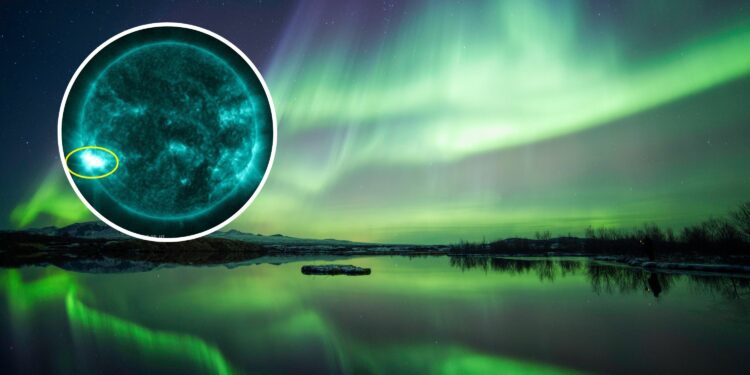This short video captured using data from the GOES Solar Ultraviolet Imager (SUVI) clearly shows the intense X-class flare that peaked around 1529 UTC today. pic.twitter.com/r7UpUhoTVl
— NOAA Space Weather Prediction Center (@NWSSWPC) September 14, 2024
The strength of the solar flare determines the extent of the blackout. Flares are classified into categories ranging between A, B, C, M and X, with X the most powerful. At X4.5, this weekend’s flare was one of the most powerful forms. The most powerful flare ever recorded was detected in 2003, and estimated to be about X45.
The CME released at the same time as the X4.5 flare is heading toward Earth and is expected to hit our magnetic field later Monday.
“Periods of G3 [Strong] geomagnetic storms are likely on 16 Sep 2024 due to coronal hole influences and the anticipated arrival of a CME associated with an X4.5 flare at 14/1529 UTC from AR3825,” NOAA’s Space Weather Prediction Center said in a forecast. “Aurora may be visible as low as Pennsylvania to Iowa to Oregon.”
Geomagnetic storms are categorized on a scale of G1 to G5, with G5 storms the most powerful and most uncommon. The G5 storm that caused auroras to be seen across much of the U.S. on May 10 was the first since 2003, during the same storms that sparked the X45 flare.
Periods of G3 (Strong) geomagnetic storms are likely on 16 Sep 2024 due to coronal hole influences and the anticipated arrival of a CME associated with an X4.5 flare at 14/1529 UTC from AR3825. pic.twitter.com/fIZTRhwkej
— NOAA Space Weather Prediction Center (@NWSSWPC) September 14, 2024
Charged particles in the CME are funneled by Earth’s magnetic field toward the polar regions, where they interact with gases like oxygen and nitrogen, causing light emissions known as the aurora. More powerful geomagnetic storms result in auroras being seen at much lower latitudes than usual. The auroras take on different colors depending on the type of gas involved in the collisions, with oxygen usually giving off green or red light, while nitrogen can produce blue or purplish hues.
Do you have a tip on a science story that Newsweek should be covering? Do you have a question about geomagnetic storms? Let us know via [email protected].
Source link : http://www.bing.com/news/apiclick.aspx?ref=FexRss&aid=&tid=66e869617bef4165b61525ee4c4fc5b0&url=https%3A%2F%2Fwww.newsweek.com%2Fsolar-flare-radio-blackout-northern-lights-coronal-mass-ejection-space-weather-1954451&c=18403824179140776396&mkt=en-us
Author :
Publish date : 2024-09-16 03:30:00
Copyright for syndicated content belongs to the linked Source.












